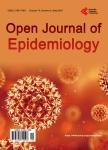Attachment styles and PTSD in adolescents in three Nordic Countries
Attachment styles and PTSD in adolescents in three Nordic Countries作者机构:National Centre for Psychotraumatology University of Southern Denmark Odense Denmark
出 版 物:《Open Journal of Epidemiology》 (流行病学期刊(英文))
年 卷 期:2013年第3卷第2期
页 面:62-69页
学科分类:1002[医学-临床医学] 100214[医学-肿瘤学] 10[医学]
主 题:Attachment Posttraumatic Stress Disorder Traumatic Events Negative Life Events Gender Adolescents
摘 要:Studies of possible variables influencing development of posttraumatic stress (PTSD) are of great importance in the effort to enhance preventive and interventional methods in the aim to prevail this devastating condition. Despite the vast research in adults, little is still known of adolescents. Although research is scarce, attachment style has been identified to be an influencing factor in adults, and still research in adolescent is almost non-existent. To our knowledge, no prior study has been conducted, looking at the relationship between attachment style, exposure to a broad range of potentially traumatic events, and subsequent PTSD symptoms in a cross cultural perspective. This is the aim of the present study. Procedure: Data was collected from questionnaire surveys of 1283 adolescents (mean age 14.1 years). Measures: PTSD was measured with The Harvard Trauma Questionnaire-Part IV (HTQ);and attachment style was studied using the Revised Adult Attachment Scale (RAAS). Potentially traumatic events were examined using a broad event list of 19 events. Results: Contrary to what was expected, significant cross cultural differences were found in the distribution of securely, preoccupied, and dismissive attached. Around half of the Faroese population was securely attached, contrary to the Danish and Icelandic population, where the majority was dismissive attached. Cross cultural differences were also found in the distribution of attachment style among those adolescents with PTSD. The majority of the Danish adolescent population with PTSD was dismissive attached;the majority of the Faroese adolescent population with PTSD was securely attached, and in the Icelandic adolescents with PTSD were distributed somewhat even between the four attachment styles. Finally, cross cultural differences were identified in which potentially traumatic events had a significant contribution to the variation in PTSD. The results are discussed and clinical recommendations are presented.



